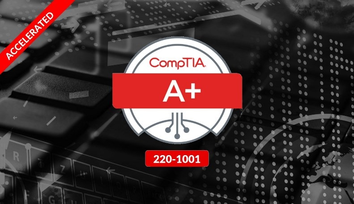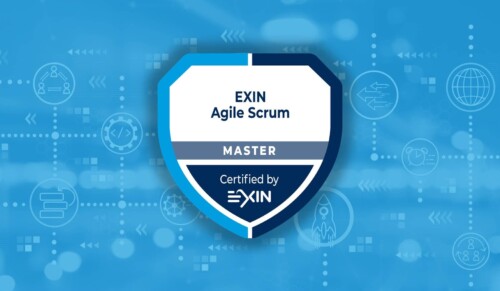Description
Overview
The Accelerated CompTIA A+ is the preferred qualifying credential for technical support and IT operational roles. This course focuses on the 220-1001 exam and is for exam candidates that have studied for the exam, are familiar with the content, or want a quick approach to the objectives.
- 19:30:00 Hours
- 12 Months Access
- Presented by highly qualified, industry leading experts
Course Details
Objectives
- Install and configure PC system unit components and peripheral devices.
- Support operating systems.
- Install, configure, and troubleshoot internal system components.
- Install, configure, and troubleshoot display and multimedia devices.
- Install, configure, and troubleshoot storage devices.
- Explain network infrastructure concepts.
- Install, configure, and maintain operating systems.
- Maintain and troubleshoot Microsoft Windows.
- Configure and troubleshoot network connections.
- Troubleshoot workstation security issues.
- Implement client virtualization and cloud computing.
- Manage users, workstations, and shared resources.
- Implement physical security.
- Secure workstations and data.
- Support and troubleshoot laptops.
- Support and troubleshoot mobile devices.
- Install, configure, and troubleshoot print devices.
- Implement operational procedures.
Audience
- IT Professionals in a technical support role.
Prerequisites
- Start the computer and navigate the desktop.
- Recognize the main components of a PC and different data media such as USB drives and DVDs.
- Use Windows Explorer to create directories and subdirectories and manage files.
- Use a web browser such as Internet Explorer to view websites.
Course Outline
Top of Form
STORAGE
- Overview
- Introduction to Storage
- Magnetic Storage: Characteristics
- Magnetic Storage: Standards
- Magnetic Storage: Performance
- Determining Magnetic Storage
- Electrical Storage – Characteristics
- Electrical Storage – Standards
- Determining Electrical Storage
- Optical Storage – Characteristics
- Optical Storage – Standards
- Determining Optical Storage
- Installing Storage Devices
- Configuring Storage
- Optimizing Storage
- Troubleshooting Storage
MOTHERBOARDS
- Motherboard Form Factors
- Motherboard Connections
- Motherboard BIOS-UEFI Settings
- Troubleshooting Memory
COOLING AND POWER
- Cooling Systems
- Power Supply Units
- Troubleshooting Cooling and Power Issues
MEMORY
Memory
CPUS
- CPUs – Features and Characteristics
- CPUs – Sockets and Types
DISPLAY DEVICES
- Display Devices – Display Types
- Display Devices – Cables and Connections
- Display Devices – Features
- Troubleshooting Display Devices
EXPANSION CARDS
- Expansion Cards
COMPUTER CASES
- Computer Cases
CUSTOM PCS
- Custom PCs
PERIPHERALS
- Peripherals
LAPTOPS AND MOBILE DEVICES
- Laptop Hardware and Features
- Troubleshooting Laptop Issues
- Mobile Devices – Types, Accessories and Ports
- Mobile Devices – Connectivity and App Support
- Mobiles Devices – Syncronization
PRINTERS
- Printers: Types
- Printers: Print Processes and Maintenance
- Troubleshooting Printers
VIRTUALIZATION & CLOUD
- Virtualization: Basics
- Virtualization: Hypervisors
- Virtualization: Requirements
- Cloud Computing: Models
- Cloud Computing: Features
NETWORKING
- Network Services – Ports and Protocols
- Network Devices
- Wireless Standards
- Internet Connections
- Network Types
- Network Tools
- IP Addresses – IPv4
- IP Addresses – IPv4 Classes
- IP Addresses – IPv6
- Network Configuration Services
- Cabling Standards
- Network Adapter Configuration
- SOHO – Connectivity Devices
- Network TroubleshootingBottom of Form



